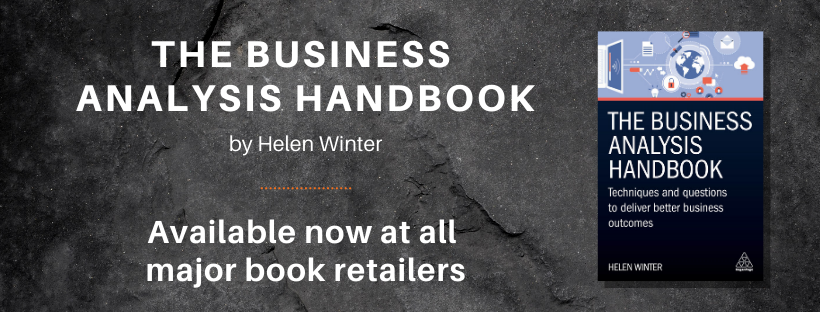
There are different roles within business analysis. Below lists some of the different job titles encountered and the differences in job description and skills required. Because of this the roles may sit in different teams. Some companies may separate out these roles whilst others may be more blended.
Business Architect (other job titles may include Lead Business Analyst)
A Business Architect will be involved earlier on in a project and be responsible for setting out the Vision. This involves understanding the business needs and determining the solution options for taking forward from a strategic point of view of the business.
To do this they will work with the business to understand the problems, opportunities and needs. They will also look at the processes and where improvements can be made, not necessarily IT related. For example, strategic solutions may involve reviewing and changing the target operating model. Business Architects will have knowledge or be able to work with other IT architects to identify what solutions should be adapted taking into account the capabilities of the organisation and the future direction.
In terms of deliverables they will tend to be involved with developing and presenting business cases to senior management.
Business Analyst (other job titles may include Process Analyst, Requirements Engineer)
A Business Analyst will be involved with business process analysis, gathering and documenting stakeholder requirements. They will write the requirements so they are non-solution specific. This means it will not matter what solution is applied, the business requirements will be the same.
To do this they will run workshops and be a key communicator in the project making sure all of the requirements are agreed between business stakeholders and ensure IT stakeholders understand the requirements to be taken forward to the solution stage.
In terms of deliverables they will tend to be involved in producing Business Process Models and Business Requirements Documents.
Systems Analyst (other job titles may include Product Owner, IT Business Analyst)
A Systems Analyst will be involved with taking the stakeholder requirements from the business analyst and determining the IT system requirements. They will write the requirements so they are solution specific.
To do this they will either have knowledge about the systems or work with the developers to understand the capabilities of the system to be used or created.
In terms of deliverables they tend to be involved in putting together Functional Requirements and Non-functional Requirements documents. In Agile environments, they may write user stories or be a key player in the team for ensuring common understanding and agreements within their teams for how the solution will need to work.
Where business analysis roles are separated out such as described above there will be a need for collaboration for the following main reasons:
- To ensure handover and common understanding.
- To ensure traceability. The IT requirements need to align with the stakeholder requirements and align with the business needs and organisational strategy.
- To manage change and impact assessments.
Thoughts? Questions? Please share in the comments.
If you have found this article useful then you might like my book – The Business Analysis Handbook – Techniques and Questions for better Business Outcomes. The book is available from www.koganpage.com and all major print and e-book retailers.

